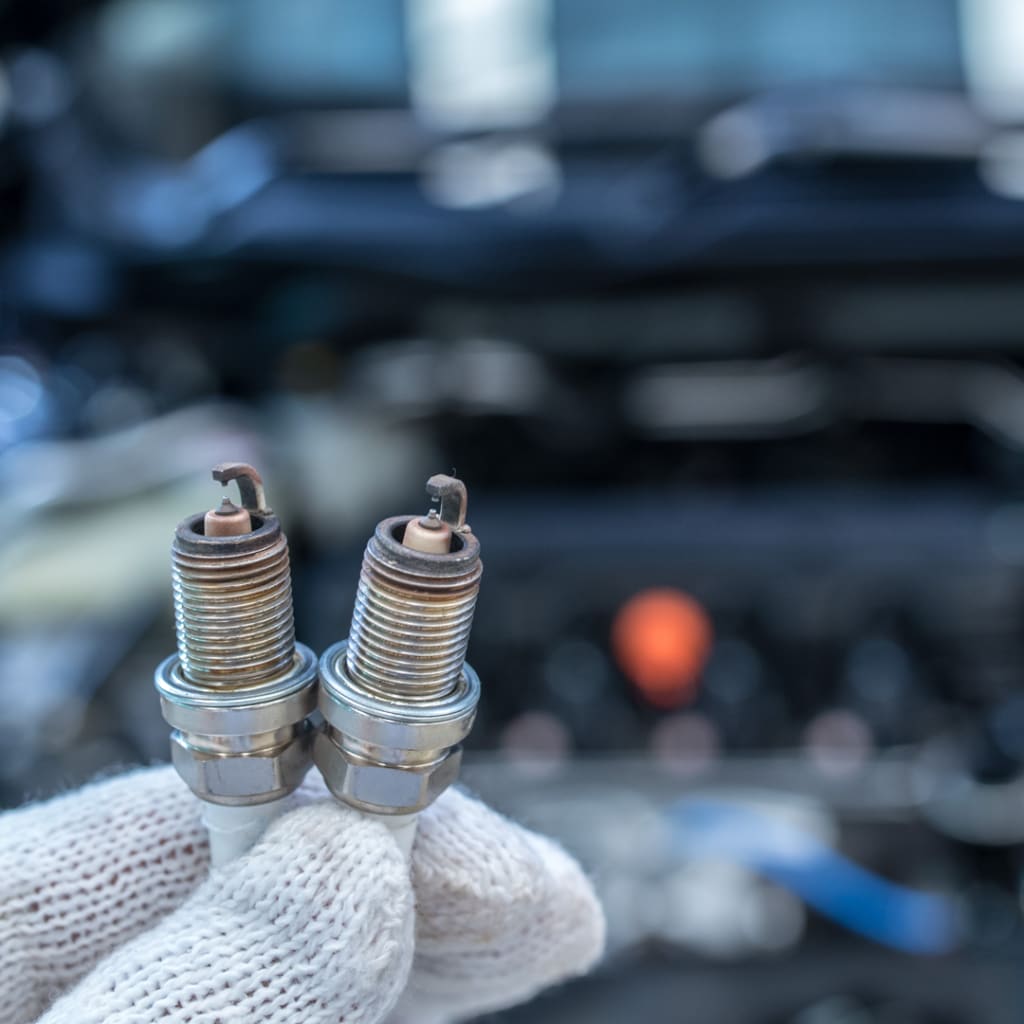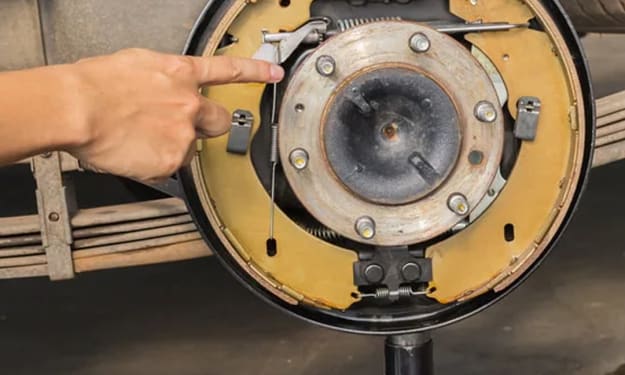What happens if you pour too much Transmission Fluid into your vehicle?
If you add too much transmission fluid, you risk causing serious harm to your system. If this occurs, it will necessitate a costly repair. If you observe any of the symptoms or consequences, get urgent assistance by looking for car service in Reading and making an appointment with a technician to have this issue rectified.

To avoid catastrophic transmission damage, it's critical to always keep an appropriate quantity of transmission fluid on hand. Pay attention to any noises coming from under the bonnet. That is, any noise that may suggest a problem with transmission. Screeching noise is one of the noises that indicates transmission difficulties.
Your transmission will begin to make noise if the fluid level is low. Overfilled transmission fluid, on the other hand, has its own set of consequences. It's critical not to use too much or too little transmission fluid.
If you are unsure, it is recommended to search online for car service in Reading to find a professional vehicle service, repair and maintenance garage to have this issue resolved.
This page describes the many types of transmission systems and how they function, as well as the implications of overfilled transmission fluid. Let's get started.
What is the process of transmission?
A vehicle's gearbox is one of its most important components. It allows the car to drive by transferring power from the engine to the wheels. It comes in a variety of shapes and sizes. There are two types of transmissions:
• Automatic
• Manual
The manual version necessitates the driver performing more duties in order to move efficiently.
Have you ever wondered what a transmission is for and how it functions? Depending on the sort of transmission you have, it has different functions and uses. It allows the wheels to move when the vehicle accelerates up or slows down, regardless of the gearbox type.
When a car comes to a halt, the gearbox disconnects the drive shafts from the engine, allowing the engine to idle when the vehicle is not moving. When you stomp on the accelerator pedal, the gearbox works in tandem with the engine to allow the car to move quickly.
Let's have a look at the different sorts of transmissions:
1. Manual transmission -
For the car to function efficiently, the driver must do an additional duty utilising the clutch pedal and a gear lever or stick. A pair of input and output shafts, as well as a set of gears, are used in these transmissions. The driver is responsible for the smooth operation of the manual gearbox, since he must pick the correct ratios to engage or disengage the clutch mechanism.To engage and release the driveshaft from the engine, the manual gearbox uses a clutch moon, pressure plate, and flex-plate. The flywheel (flex-plate) and the pressure plate are positioned at the back of the engine. The clutch moon is splined on the transmission input shaft and placed on the flex-plate's centre axis.
2. Automatic transmission -
What does an automatic gearbox entail? The main distinction between automatic and manual transmissions is that the latter requires an additional effort to function effectively. In an automated gearbox, on the other hand, the system decides when to shift gears up or down. Instead of pressure plates and clutches, the automatic gearbox shifts gears using a torque converter.Hydraulic pressure is used to move gears in the most popular automatic gearbox. When you stomp on the accelerator pedal, it up-shifts and down-shifts into different gear ranges using a fluid coupling or torque converter and gear sets. The fluid coupling links the gearbox to the engine and shifts the gears using pressurised fluid. The fluid coupling in manual transmissions substitutes the friction clutch and may bring the vehicle to a complete stop without stalling.
3. CVT transmission -
CVT stands for continuously variable transmission and refers to a pulley-controlled gearbox that is commonly used in compact passenger cars with modest engines. They're most commonly seen in tiny hybrid cars. A CVT transmission's fundamental layout consists of a secondary big and main tiny driven clutches connected by a chain or belt. When not in use, the chain or belt will be high in the secondary drive and low in the primary drive.The secondary drive expands when you push on the accelerator pedal, forcing the chain or belt to move down, while the primary drive contracts, causing the chain or belt to walk up.
What happens if you overfill the transmission fluid reservoir?
When you use too much transmission fluid, it may have significant consequences that cost you hundreds of pounds. The consequences of overfilling your transmission fluid are outlined below:
1. Erratic shifting -
If you overfill your transmission with fluid, the gear sets and bearings will be submerged. As a result, the gears will find it difficult to shift in the right direction. To put it another way, too much transmission fluid causes gear teeth to slip. Look for car garages in Reading online and book your car in with a car mechanic to repair the issue.
2. Foamy Transmission Fluid -
Foamy transmission fluid is caused by an overfilled transmission fluid. Foaming can cause a variety of transmission problems, including insufficient lubrication, overheating, and hard shifting. It has the potential to irreversibly harm the entire system over time.
3. Foaming can occur when a 4-5
litre transmission is overfilled by 1 quart, depending on the transmission size. The addition of one quart may not have a detrimental impact on 8lrs transmission. If foaming develops, the gears will begin to stick. Because the oil has lost its density and viscosity, they will not operate correctly. This might result in severe transmission assembly damage.
4. Lack of lubrication -
Because overfilled transmission fluid foams, it won't adequately lubricate the transmission components. This will cause system wear and tear, which might eventually lead to a complete failure.
5. Transmission overheating -
If your transmission fluid is overfilled, it will overheat. If there is too much transmission fluid in the system, it will not be able to cool down properly. However, adding a half-quart of transmission won't make a difference.
6. Transmission fluid leakage -
Excess transmission fluid causes excessive pressure in the system, which can lead to transmission fluid leaks. When this happens, the fluid will begin seeking for a way out, and it may wind up leaking fluid via every available channel. Other system components will be harmed as a result of this.
Automatic transmissions, as previously established, rely on pressurised fluid from the torque converter to work. Overfilling it will cause hard shifting and slippage in the transmission. Before you have a total transmission failure, search on the internet for reputable repair garages in Reading to have a full diagnostic completed and the relevant components repaired or replaced.
Another disadvantage of overfilling your gearbox is that the fluid may lose its lubricating qualities. It might potentially result in the entire system exploding and ceasing to function. You'll be stuck with a hefty repair charge if this happens.
In any event, a small amount of extra transmission fluid, around half a quart, will not harm the transmission.
Frequently Asked Questions (FAQ’s)
What's the best way to get rid of extra transmission fluid?
Taking your vehicle to a mechanic or emptying the fluid yourself is the simplest way to remove excess transmission fluid. By removing the crankcase plug or using a filler tuber, you may drain the fluid.
If you go with filler tuber, you'll have to devote some time to it. Hold the filler tube in place until the liquid reaches the cap, then take it out and drain it into a catch pan.
Is it possible to have too much transmission fluid and have the transmission slip?
Excess transmission fluid can harm the transmission in a number of ways. If the fluid level remains over the acceptable level, it may begin to mix with air. Gear slippage, hard shifting, and other transmission shifting difficulties might result as a result of this.
Will a leaking transmission be caused by an overfilled transmission?
Overfilling your transmission fluid won't harm your seals, but it will cause them to leak. The transmission is built to prevent pressure leakage in non-pressurized locations. Excess fluid will escape through the seals if there is a high pressure.
When I move gears in my automatic transmission automobile, why does it jerk?
When changing gears, your automatic gearbox may jerk for a variety of reasons. However, there are several frequent causes to be aware of. Jerky, shaky or difficult shifting might indicate that your transmission fluid needs to be changed or that the fluid level is low.
What should I do if I overfill my transmission fluid?
If you discover that your vehicle has too much transmission fluid, you must act quickly to prevent catastrophic damage to the system's components. You have the option of taking your car to a mechanic or reducing the fluid yourself. You must also maintain the correct fluid level.
Is it possible for too much transmission to induce limp mode?
When internal transmission or engine sensors identify transmission problems, the vehicle is put into limp mode. As a result, you may securely drive to a mechanic garage for maintenance. If you keep driving in this state, it will result in catastrophic damage, which you do not want to happen.
About the Creator
Car Services in Reading
Are you looking for a reputable and high-quality car garage in Reading ? Car Services in Reading is your one-stop shop for online garage services in Reading. Book online car repair services with us with confidence.
Enjoyed the story? Support the Creator.
Subscribe for free to receive all their stories in your feed. You could also pledge your support or give them a one-off tip, letting them know you appreciate their work.






Comments
There are no comments for this story
Be the first to respond and start the conversation.